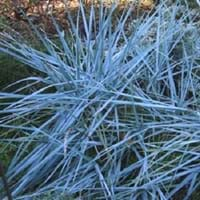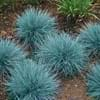Life Span
Perennial
Perennial
Type
Grass
Flowering Plants
Origin
Europe, Western Asia
Italy, Southern Europe, western Balkans
Types
Blue Dune Lyme Grass
not available
Habitat
Clay soil areas, Loamy soils, Sandy areas, sandy seeps, Well Drained
Islands, Not Available
USDA Hardiness Zone
7-9
7-10
AHS Heat Zone
9 - 7
7 - 4
Sunset Zone
Not Available
21,22
Habit
Spreading
Upright/Erect
Flower Color
Creamy Yellow
Lavender, Light Blue, White
Flower Color Modifier
Bicolor
Bicolor
Fruit Color
Not Available
Non Fruiting Plant
Leaf Color in Spring
Blue Green, Gray Green
Green, Light Green
Leaf Color in Summer
Light Green
Green, Light Green
Leaf Color in Fall
Blue Green, Gray Green
Green, Light Green
Leaf Color in Winter
Tan
Light Green
Leaf Shape
Grass like
Compound
Plant Season
Summer, Fall, Winter
Summer, Fall
Sunlight
Full Sun, Partial Sun, Partial shade
Full Sun, Partial Sun
Type of Soil
Clay, Loam, Sand
Loam
The pH of Soil
Acidic, Neutral, Alkaline
Acidic, Neutral
Soil Drainage
Well drained
Average
Bloom Time
Early Summer, Summer
Early Summer, Summer, Late Summer
Tolerances
Wet Site, Pollution, Drought, Soil Compaction
Heat Tolerance
Where to Plant?
Container, Ground, Pot
Ground, Pot
How to Plant?
Root Division, Rooted stem cutting, Seedlings
From bulbs, Seedlings, Stem Planting
Plant Maintenance
Medium
Low
Watering Requirements
Average Water Needs, occasional watering once established
Average Water Needs, Do Not over Water, Never Over-water, Requires regular watering
In Summer
Lots of watering
Lots of watering
In Spring
Moderate
Moderate
In Winter
Average Water
Average Water
Soil pH
Acidic, Neutral, Alkaline
Acidic, Neutral
Soil Type
Clay, Loam, Sand
Loam
Soil Drainage Capacity
Well drained
Average
Sun Exposure
Full Sun, Partial Sun, Partial shade
Full Sun, Partial Sun
Pruning
No pruning needed in the early stages, Prune grass to maintain level
Remove damaged leaves, Remove dead branches, Remove dead leaves, Remove dead or diseased plant parts
Fertilizers
All-Purpose Liquid Fertilizer, fertilize in spring
fertilize every 2-3 weeks while growing, fertilize in growing season
Pests and Diseases
Red blotch
fungus
Plant Tolerance
Drought, Pollution, Soil Compaction, Wet Site
Drought, Heat Tolerance
Flowers
Insignificant
Showy
Flower Petal Number
Single
Single
Showy Foliage
Yes
Not Available
Foliage Texture
Coarse
Not Available
Foliage Sheen
Matte
Not Available
Attracts
Butterflies
Birds, Insects
Aesthetic Uses
Ground Cover, Landscape Designing
Beautification, Landscape Designing, Showy Purposes
Beauty Benefits
Not Available
Not Available
Edible Uses
Insignificant
No
Environmental Uses
Air purification, soil erosion prevension on hill slopes, soil stabilisation
Air purification
Medicinal Uses
Not Available
Asthma, Cough, Unknown
Part of Plant Used
Stem
Flowers, Leaves
Other Uses
Used as Ornamental plant
Decoration Purposes, Showy Purposes, Used as Ornamental plant
Used As Indoor Plant
No
Yes
Used As Outdoor Plant
Yes
Yes
Garden Design
Dried Flower/Everlasting, Groundcover
Mixed Border, Wildflower
Botanical Name
ELYMUS glaucus
CAMPANULA pyramidalis
Common Name
Blue Lyme Grass, Blue Wildrye
Chimney Bellflower
In Hindi
Blue Lyme Grass
Chimney Bellflower
In German
Blau Lyme Grass
Schornstein Glockenblume
In French
Bleu Lyme Herbe
cheminée Bellflower
In Spanish
Azul hierba de Lyme
Chimenea Bellflower
In Greek
Μπλε Lyme Grass
καμινάδα καμπανούλα
In Portuguese
Azul Lyme grama
chaminé Bellflower
In Polish
Niebieska Trawa Lyme
komin Bellflower
In Latin
Blue Lyme Grass
caminorum purgatores Bellflower
Phylum
Magnoliophyta
Tracheophyta
Class
Liliopsida
Magnoliopsida
Order
Cyperales
Asterales
Family
Poaceae
Campanulaceae
Clade
Angiosperms, Commelinids, Monocots
Angiosperms, Asterids, Eudicots
Tribe
Triticeae
Not Available
Subfamily
Pooideae
Not Available
Number of Species
Not Available
Not Available
Season and Care of Blue Lyme Grass and Chimney Bellflower
Season and care of Blue Lyme Grass and Chimney Bellflower is important to know. While considering everything about Blue Lyme Grass and Chimney Bellflower Care, growing season is an essential factor. Blue Lyme Grass season is Summer, Fall and Winter and Chimney Bellflower season is Summer, Fall and Winter. The type of soil for Blue Lyme Grass is Clay, Loam, Sand and for Chimney Bellflower is Loam while the PH of soil for Blue Lyme Grass is Acidic, Neutral, Alkaline and for Chimney Bellflower is Acidic, Neutral.
Blue Lyme Grass and Chimney Bellflower Physical Information
Blue Lyme Grass and Chimney Bellflower physical information is very important for comparison. Blue Lyme Grass height is 150.00 cm and width 75.00 cm whereas Chimney Bellflower height is 120.00 cm and width 45.70 cm. The color specification of Blue Lyme Grass and Chimney Bellflower are as follows:
Blue Lyme Grass flower color: Creamy Yellow
Blue Lyme Grass leaf color: Blue Green and Gray Green
Chimney Bellflower flower color: Lavender, Light Blue and White
- Chimney Bellflower leaf color: Green and Light Green
Care of Blue Lyme Grass and Chimney Bellflower
Care of Blue Lyme Grass and Chimney Bellflower include pruning, fertilizers, watering etc. Blue Lyme Grass pruning is done No pruning needed in the early stages and Prune grass to maintain level and Chimney Bellflower pruning is done Remove damaged leaves, Remove dead branches, Remove dead leaves and Remove dead or diseased plant parts. In summer Blue Lyme Grass needs Lots of watering and in winter, it needs Average Water. Whereas, in summer Chimney Bellflower needs Lots of watering and in winter, it needs Average Water.





